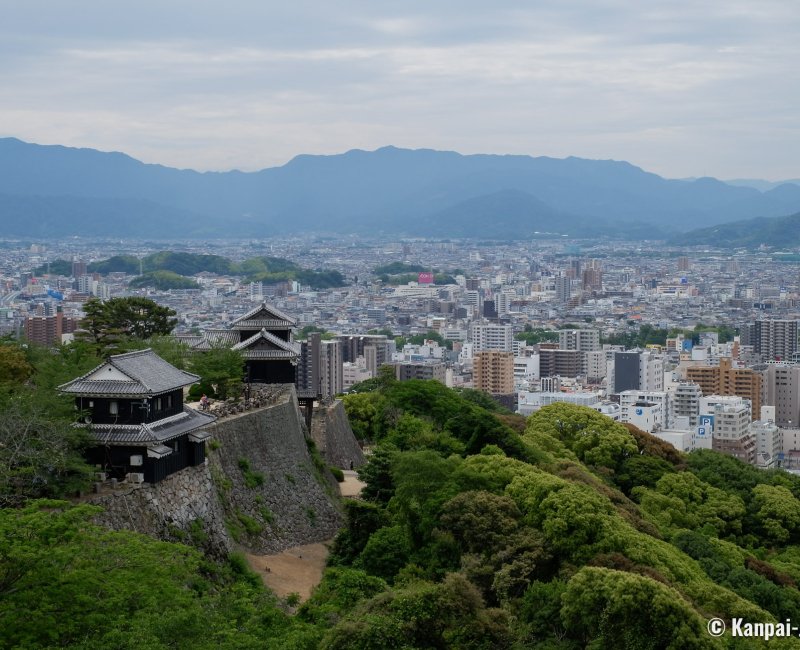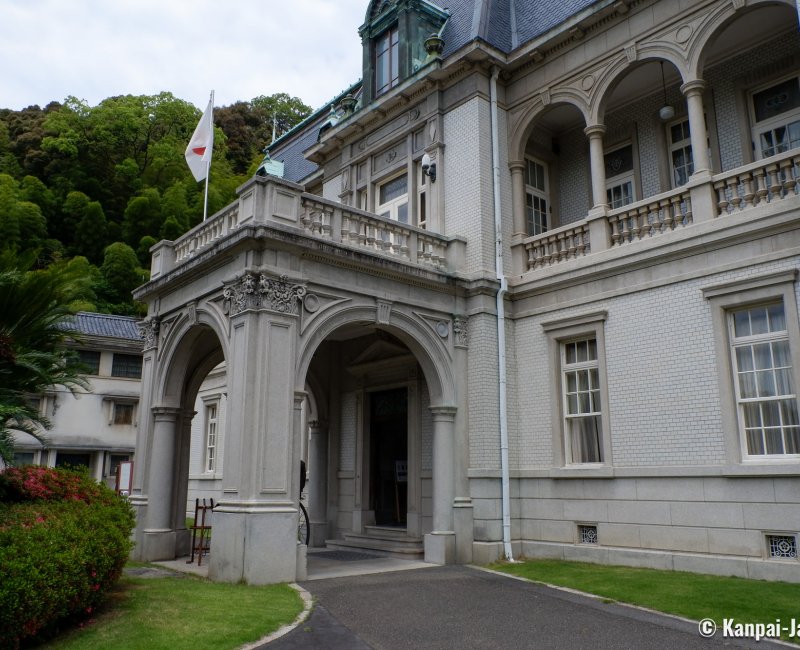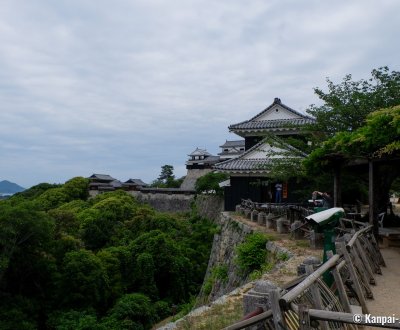Matsuyama Castle
Authentic Keep of the Former Iyo Province
Matsuyama Castle is a 16th century fortress located in Matsuyama, the capital of Ehime prefecture, in the north-west of Shikoku island in Japan. Listed as one of Japan’s last 12 authentic keeps, it is standing on an elevated plateau, offering wonderful views on the Seto Inland Sea and on the mountains inland.
Matsuyama Castle 🏯 is overlooking the center of Matsuyama city from Mount Katsuyama, 132 meters above sea level. Along with the keeps of Uwajima (Ehime’s south), Marugame (Kagawa) and Kochi (Kochi), it is one of Shikoku’s 4 authentic donjons, that are also part of Japan’s last 12 authentic castles.
Authentic castle of the Edo period
Built between 1603 and 1627, to protect the former Iyo province (nowadays Ehime prefecture), it extends on a 400 meters long and 100 meters wide plateau at the top of the mountain, encompassed in its main enclosure Honmaru.
Placed under the charge of the Matsudaira clan until the end of the Edo period, the keep was reduced from 5 to 3 stories in 1642. Struck by lightning in 1784, it was reconstructed for the 1rst time in 1854. At the Meiji restoration, part of the yagura turrets and other fortified structures were dismantled. The area between the foot of the mountain and the moats became a public park in 1874, and, from 1886 to 1945, Ninomaru accommodated a garrison of the Japanese Imperial Army. The castle was partially destroyed during air bombings in 1945, and also by a fire 🔥 in 1949.

Unobstructed view on the city
Nowadays, the fortress and its impressive bulwarks of more than 10 meters high, topped with turrets, are the must-see of the public park encompassing the 3 former enclosures of the castle grounds.
The fortified plateau, planted of cherry trees 🌸 and pine trees, is accessible thanks to a walking trail, but also by a literal chairlift and a ropeway. The latter is the recommended way to access to the keep, as it helps preserving stamina for the visit. The ropeway station is located at the entrance of Honmaru, and one must go through several gates before reaching the Tenshu keep.
Visitors must take their shoes off at the entrance of the building: slippers are provided or they can walk in socks, following the marked path along which a few explanation panels in Japanese and in English are available. The visit consists of a one-way path as the inner space is quite small. Note that the stairways are very steep and must be trodden carefully. However, they climb up to the highest room of the keep, offering a 360° view on the area.

A developing cultural center
After the keep, a forest trail made of uneven stepping stones goes down to Shiroyama Park, home to Ninomaru, the 2nd enclosure that used to be the residence of the lord and is now a garden.
A little bit further down, Horinouchi Park is delineated by the moats. The Museum of Art, Ehime is surrounded by a famous hanami spot, with about 200 cherry trees blooming in spring.
Another curiosity is Bansui-so, a former aristocratic residence built in 1922, and inspired from French classical architecture. It is neighboring Saka no ue no Kumo Museum, an exhibition hall dedicated to Japanese literature and life during the Meiji Era, designed by Tadao Ando and completed in 2006.
Matsuyama Castle is ideally located in the center of the city, about 20 minutes by tram from Matsuyama JR station, and Dogo Onsen ♨️ thermal district. The shotengai shopping street Okaido offers a nice stroll among its shops. A nice place for lunch is the recently inaugurated Bocchan Food Hall located at the ground floor of Mitsukoshi department store whose mascot is a reference to Natsume Soseki’s novel I Am a Cat 🐈.

